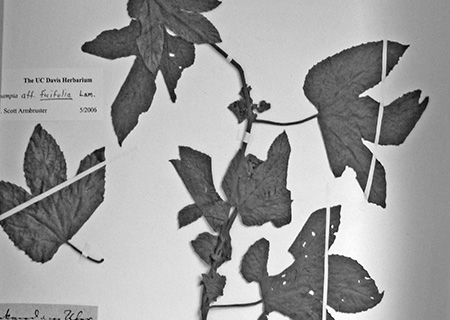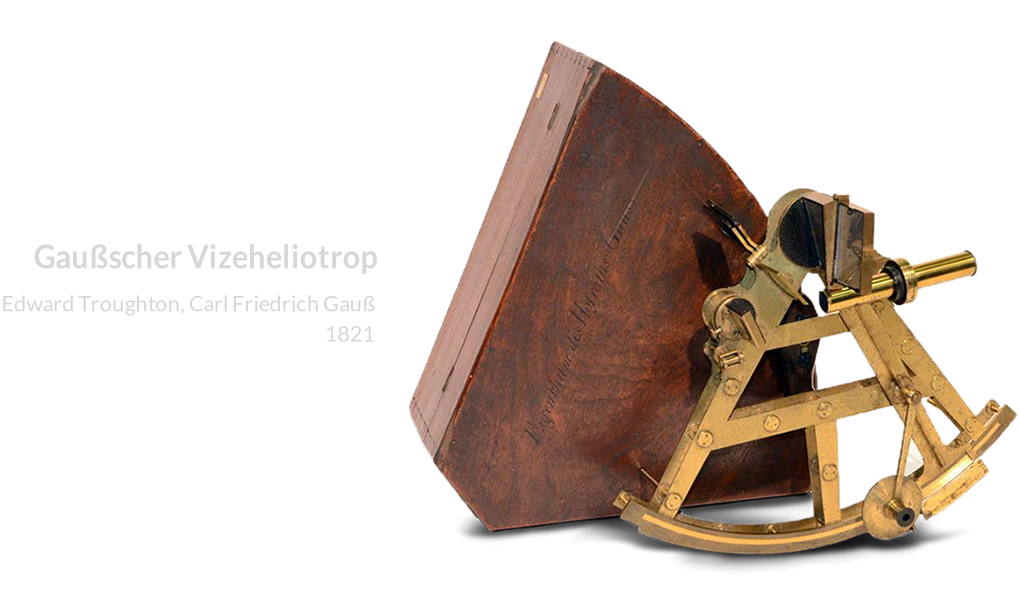
Adresse:
Albrecht-von-Haller-Institut für Pflanzenwissenschaften
Untere Karspüle 2
37073 Göttingen
Öffnungszeiten/Zugang:
Führungen: nach Vereinbarung
Ansprechpartner/Kontakt:
Dr. Marc Appelhans
Tel.: +49 551 39-28220
E-Mail: marc.appelhans@biologie.uni-goettingen.de
Homepage der Sammlung
History of the collection:
The Herbarium Gottingense (GOET; http://www.uni-goettingen.de/de/herbarium-goet/157034.html) belongs to the Georg-August-University of Göttingen and currently houses about 800.000 specimens including more than 14.000 types, and the largest part of the collection consists of vascular plants. The specimens have been collected in all parts of the world with many specimens from Germany, the West Indies and South America.
The herbarium was founded in 1832, but the oldest collections are much older. Our oldest collection is the “Herbarius Vivus”, a set of 1800 specimens collected by Abraham Wasteau, who was a medical doctor in Leiden (Netherlands). The “Herbarius Vivus” was sold in Leiden in 1716, so that this collection is at least 300 years old.
Additional historical collections include the herbarium of Albrecht von Haller and the “Plantae Malabaricae”, which both stem from the 1730’s. The “Plantae Malabaricae” have been collected in the surroundings of Tharangambadi (Tamil Nadu, India) during the Danish Tranquebar Mission. This collection is not associated to Van Rheede tot Drakenstein’s “Hortus Malabaricus”, but it is probably among the earliest botanical collections from the area. The “Plantae Malabaricae” have never been revised and are still stored in the original books with leather binding. The only label information consists of the vernacular plant names in Malayalam and their transcriptions into the Latin alphabet.
One of the most important collections is the Georg Forster herbarium, which has been collected during the second voyage of James Cook from 1772 to 1775.
A name that is tightly linked to the Göttingen herbarium is that of August Heinrich Rudolf Grisebach (1814-1879), who was a professor at Göttingen University. Grisebach described numerous taxa and the herbarium grew by more than 100.000 specimens during his time in Göttingen. All important collectors of the Göttingen herbarium are listed in our “Index collectorum principalium herbaria Gottingensis”, which is available on our webpage (http://www.uni-goettingen.de/de/herbarium-goet/157034.html).
Number of objects/specimens:
About 800.000
Important collections:
Oldest collections: Herbarius Vivus (before 1716), Plantae Malabaricae (1730’s), Herbarium Hugo (1730-1760), Herbarium von Haller (1730’s), Herbarium Forster (1772-1775)
Important collectors: Friedrich Gottlieb Bartling (1798-1875),
Friedrich Ehrhart (1742-1795), August Grisebach (1814-1879),
Georg Friedrich Wilhelm Meyer (1782-1856),
Albert Peter (1853-1937),
Hermann Graf zu Solms-Laubach (1842-1915),
Charles Wright (1811-1885)
An additional important collection is the herbarium of the Botanical Garden in Herrenhausen/Hanover. It was given to the Göttingen herbarium in 1969 and contains important collections from Johann Christoph Wendland (1755-1828), Heinrich Ludolph Wendland (1792-1869) and Hermann Wendland (1825-1903) as well as additional specimens collected by Friedrich Ehrhart.
Digitization:
The type collection and two historical collections (von Haller, Forster) have been digitized with support from “The Andrew W. Mellon Foundation”. After the completion of this project, we moved on with the digitization of other important collections. We are currently digitizing the above-mentioned collections from Herrenhausen/Hanover, the “Herbarius Vivus”, “Herbarium Hugo” and “Plantae Malabaricae” as well as our collections from Cape Verde and Macaronesia, which have mainly been collected by our former curator Klaus Lewejohann.




